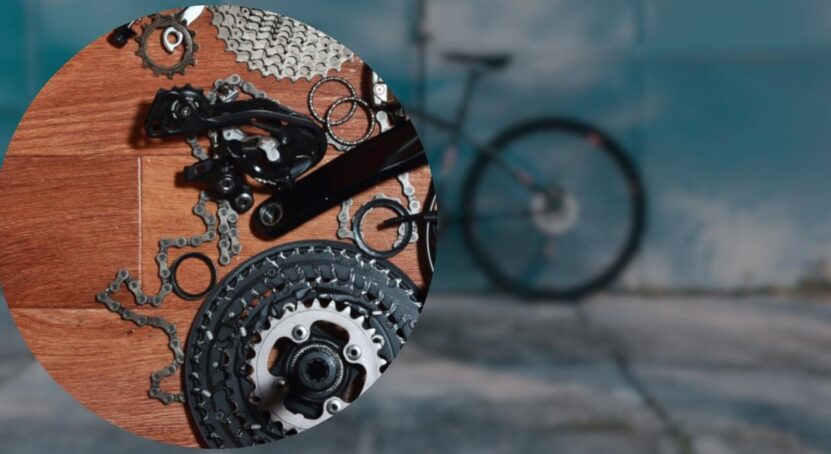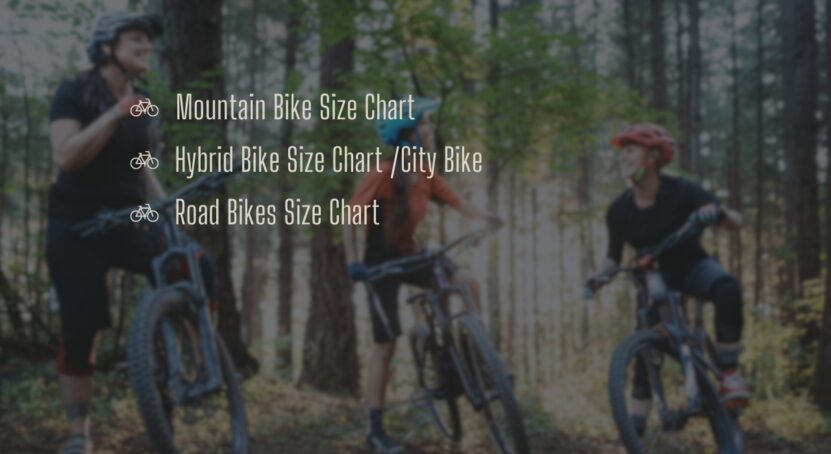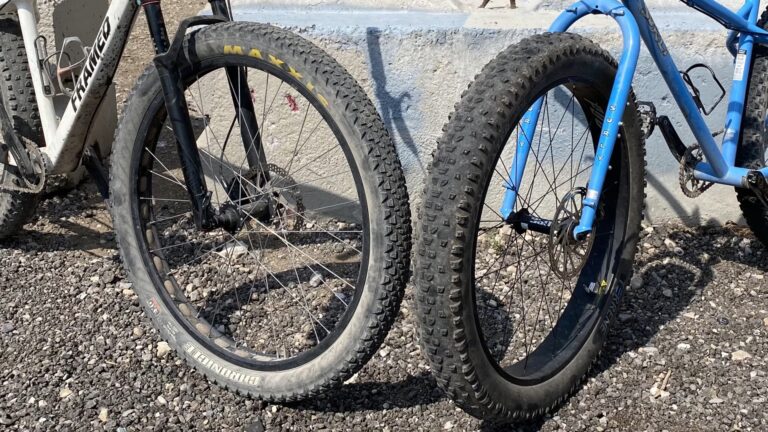Embarking on the journey to find the ideal 29-inch bike tailored specifically to your body size? I totally understand the challenge. With so many options, specifications, and brands out there, it’s easy to feel lost in the vast sea of cycling choices. But here’s the good news: I’m here to guide you every step of the way.
From understanding the nuances of frame sizes to the subtle differences in handlebar heights, we’ll explore it all. Remember, it’s not just about getting a bike; it’s about getting the right bike that feels like an extension of you.
Whether you’re a weekend warrior, an urban commuter, or someone just looking to enjoy leisurely rides in the park, this guide is your ticket to making the best choice. So, strap on your helmet, and let’s embark on this exciting journey together!
Who Is This Bike for?

29-inch bikes are often recommended for people who are between 5’10” and 6’2″ tall. However, the best way to determine if a 29er is right for you is to test-ride one and see how it feels.
Every person is different, so what feels comfortable for one person may not feel comfortable for another. Ultimately, the best bike is the one that feels best to you and helps you ride the way you want to ride.
Mountain Bike 29 Inch Wheel
Mountain bike 29-inch wheel sizes are becoming more popular, as they offer some significant advantages over traditional 26-inch wheels.
- First and foremost, 29ers have a much larger contact patch with the ground, resulting in increased traction and stability.
- They also tend to roll over obstacles more easily, making them ideal for tackling rough terrain.
- Finally, 29ers tend to be more comfortable riding, as they put less stress on the rider’s body.
If you’re looking for a mountain bike that can handle anything you throw at it, a 29er is definitely worth considering.
Fat Tire Mountain Bike

Fat tire mountain bikes with 29-inch wheels are becoming increasingly popular, as they offer a great ride and more stability than traditional mountain bikes.
Fat tires can provide better traction on loose or uneven terrain, and larger wheels can help you roll over obstacles more easily.
If you’re looking for a mountain bike that can handle just about anything, a fat-tire mountain bike with 29-inch wheels is a great option.
Ideal Material

The most common materials are steel, aluminum, and carbon fiber.
- Steel is the traditional material for \frames and is known for being strong and durable. However, it is also quite heavy, which can make riding a steel-framed bike a bit more difficult.
- Aluminum is a lighter alternative to steel, making it a popular choice for 29-inch bikes. It is also fairly strong and resistant to damage, although it is not quite as durable as steel.
- Carbon fiber is the lightest of all the materials used for \frames, making it the ideal choice if you are looking for a bike that is easy to ride. However, carbon fiber frames can be quite expensive.
What Age Group Is A 29-Inch Bike For?

Generally for riders who are at least 12 years old and up. However, some brands may have different sizing recommendations, so it is always best to check before making a purchase.
29-inch wheels tend to be more stable and offer a smoother ride than smaller bikes, making them ideal for taller or more experienced riders.
If you’re not sure what size is right for you, always err on the side of bigger rather than smaller – you can always adjust the seat and handlebars to make a bigger bike fit better.
Who is this Bike For?
- First, you’ll want to consider your height and weight. If you’re on the taller side, you’ll likely need a larger frame size.
- If you’re on the heavier side, you may need a larger frame size as well.
- You’ll also want to take into account your riding style and the type of terrain you’ll be riding on. If you’re planning on doing a lot of downhill riding, you’ll likely need a bigger bike.
- And if you’re looking to do more cross-country riding, you may be able to get away with a smaller bike.
Ultimately, it’s important to try out a few different bikes before you make your final decision.
The Benefits
29-inch offers a number of advantages over smaller bikes.
- First, they provide more stability and control on the road.
- Second, they are easier to pedal and require less effort to maintain speed.
- Third, they are better suited for taller riders and can accommodate larger riders.
- Finally, 29-inch bikes tend to be more comfortable to ride, making them a great choice for longer rides.
What’s The Difference Between A 26-Inch Vs A 29-Inch Bike?
26-inch wheels have been the standard for mountain bikes for many years. They’re smaller, lighter, and easier to maneuver than 29ers. 26ers are also better for riders who are shorter in stature.
29-inch wheels offer a number of advantages over 26ers. They roll over obstacles more easily, they provide more traction and stability, and they’re faster on smooth terrain.
So, if you’re looking for a bike that can handle rough trails and speed along on smooth singletrack, a 29er is probably the better choice.
Of course, there are also a few disadvantages to 29-inch wheels. They’re heavier and more difficult to maneuver than 26ers, and they can be more expensive.
So, if you’re looking for a lightweight bike that’s easy to maneuver, a 26er is probably the better choice.
Performance
When it comes to performance, 26-inch mountain bikes tend to be faster and more agile than their 29-inch counterparts. This is because they have a smaller wheel size, which makes them easier to maneuver.
However, 29-inch mountain bikes are more stable and can roll over obstacles more easily thanks to their larger wheel size, which gives them more momentum.
Durability
When it comes to durability, both are very durable. However, 26-inch mountain bikes have a slightly shorter lifespan on average.
Comfort
Both are comfortable to ride. Generally speaking, 29-inchers are slightly more-so, though not significantly enough to be a swaying factor in purchase.
Price
26-inch mountain bikes tend to be more affordable than 29-inch mountain bikes
What To Consider Before Choosing A Bike?
There are a few things you should consider before buying:
- Think about what type of riding you’ll be doing most often. If you’re mostly going to be riding on pavement, then a road bike might be the best option for you. But if you plan on doing a lot of off-road riding, then a mountain bike might be better suited for you.
- Think about what size you need. Bike sizes are based on wheel size, and they usually range from 12 inches to 29 inches. If you’re not sure what size you need, it’s best to go to a local shop and have them help you out.
- Think about what kind of budget you have. Bikes can range in price from a few hundred dollars to several thousand dollars. So it’s important to figure out how much you’re willing to spend before you start shopping.
- Make sure you take the time to test-ride a few different bikes before you make your final decision. This will help you get a feel for what’s out there and what feels best to you.
Choosing the right bike doesn’t have to be difficult. Just take your time, do your research, and test-ride as many bikes as you can before you make your purchase.
Size Charts

Mountain Bike Size Chart
| Your Height in Inches | Mountain Bike Frame Size in Inches |
|---|---|
| 4’10”-5’2” | 13-14 |
| 5’2”-5’6” | 15-16 |
| 5’6”-5’10” | 17-18 |
| 5’10”-6’2” | 19-20 |
| 6’2” and up | 21 and up |
Hybrid Bike Size Chart
| Frame Size | Seat Height | Handlebar Height |
|---|---|---|
| XS | 13-15 inches | 29-31 inches |
| S | 15-17 inches | 31-33 inches |
| M | 17-19 inches | 33-35 inches |
| L | 19-21 inches | 35-37 inches |
| XL | 21-23 inches | 37-39 inches |
| XXL | 23-25 inches | 39-41 inches |
Road Bikes Size Chart
| Your Height | Frame Size (in inches) |
|---|---|
| 4’11” – 5’3″ | 13 – 15 |
| 5’3″ – 5’7″ | 15 – 17 |
| 5’7″ – 5’11″ | 17 – 19 |
| 6’0″ – 6’2″ | 19 – 21 |
| 6’2″ – 6’4″ | 21 – 23 |
| 6’4″ and up | 23+ |
FAQ
Why have 29-inch bikes gained popularity?
They have become popular for their notable benefits over smaller bikes. They offer greater stability, ideal for beginners or rough terrains. Their larger wheels ensure a smoother ride, cover more ground per pedal, and provide better traction, especially in wet or muddy conditions.
What are some tips for riding a 29-inch bike?
For those using a 29-inch, ensure it fits you for comfort and safety. Be mindful of its weight, especially in tight areas. Start slowly to get accustomed to its feel and practice on diverse terrains to improve handling and adaptability.
Does It Fit in A Car?
The answer is yes, but it might take some creative packing. A 29-inch bike is on the larger side, so it might not fit in your car the same way a smaller bike would. You might need to remove the front wheel and put the bike in sideways or take off the pedals and handlebars. Whatever you do, just make sure everything is secure so it doesn’t damage your car or bike.
Is A 29 Inch Bike Big Enough For A Man?
29 inches is the typical size for a mountain bike, and it should be big enough for most men. However, if you are very tall or have a large frame, you may need to go bigger. Some manufacturers offer bikes with 29-inch wheels in larger sizes to accommodate taller riders.
Final Words
While 29-inch offer advantages like increased stability and smoother rides, especially for taller riders, it’s essential to consider other elements like frame material, type, and wheel size. The various sizing systems and charts provided by manufacturers can guide buyers, but the ultimate test lies in physically trying out the bike.
Comfort, ease of maneuverability, and the bike’s suitability to one’s needs should always be prioritized. Whether you’re a seasoned cyclist or a beginner, investing time in research and test rides will ensure a rewarding cycling journey.

